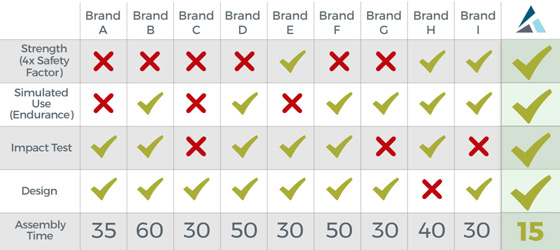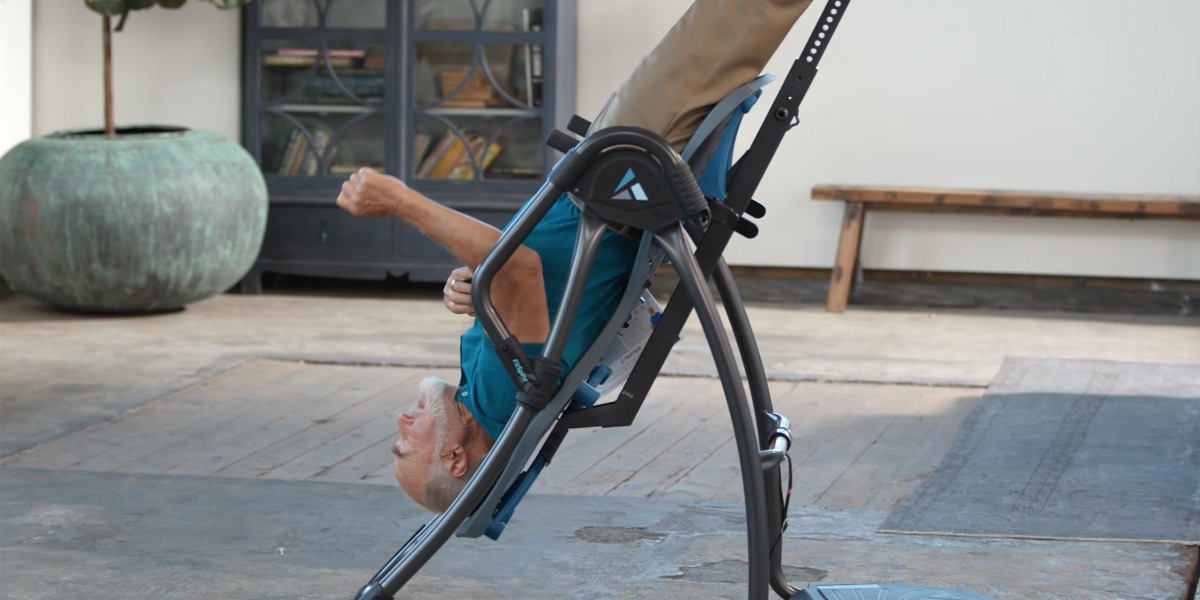Safety is a primary concern for many people considering inversion therapy for their back pain, and for good reason. The idea of hanging upside down by your ankles can seem quite daunting at first. But when done properly, on good equipment, the benefits of inverted decompression are vast and oftentimes dramatic.
There are two ways to consider the question, “Is it safe to hang upside down?” One is to address the physical effects on the human body and potential reasons someone shouldn’t invert. The other is to look at the equipment itself and talk about ways to invert comfortably and securely. We’ll address both.
What are the potential health risks for inversion?
For starters, we cannot express enough how vital it is to always consult with your doctor before beginning any new health program, and inversion tables are no different. While most healthy individuals are able to invert with only positive effects, there are health conditions that are contraindicated, such as uncontrolled high blood pressure and narrow-angle glaucoma (view medical contraindications for inversion). If you have any of these conditions, we strongly recommend that you seek approval from a licensed physician prior to use.
Having said that, if done as recommended, inversion is perfectly safe for most healthy individuals. In fact, the human body is wonderfully designed to be upside down. Internal mechanisms adjust to the changing pressures in a healthy way, and our parasympathetic nervous system kicks in to relax and relieve stress. The body elongates, taking the pressure off all weight-bearing joints. And with that comes perhaps the most important benefit of all, back pain relief.
Teeter is the ONLY inversion table on the market that is FDA-registered as a 510(k) medical device. Teeter decompression devices are indicated for back pain relief and common causes including sciatica, muscle tension, herniated discs, spinal stenosis, facet syndrome, muscle spasm, spinal curvature due to tight muscles, degenerative joint disease, and degenerative disc disease.
Are inversion tables safe to use?
Our #1 priority is your safety while inverted. Teeter has been the inversion leader since 1981 and for over three decades, inversion was our sole focus – experience which comes through in the uncompromising quality, thoughtful design, and smooth function of a Teeter Inversion Table.
Teeter exceeds the safety and quality standards set by UL – you can verify this because you’ll find the UL mark on every one of our inversion tables. Here is how we compare to other inversion table brands:

When used as directed, Teeter Inversion Tables offer a comfortable, secure way to achieve decompression and relaxation. With Teeter ‘Precision Balancing’, you have total control over your rotation and are able to return upright with ease.
Unique and patented features set Teeter apart, including patented auto-locking hinges to prevent accidental separation of the bed from the base, patented pressure-reducing ankle supports that distribute your weight comfortably and evenly around the feet and heels, and heat-treated high-gauge steel and proper welding methods (as opposed to cheaper spot welding commonly used by competing models) for better durability and security for the user.
Check out our guide “10 Things to Look for When Buying an Inversion Table,” which details the most important factors to consider when shopping for the best inversion table.
Inversion Therapy Tips
Some skeptics caution, “Inversion therapy doesn’t provide lasting relief from back pain.” And this is absolutely true – just as brushing your teeth one time doesn’t provide lasting protection from cavities or lifting weights one time doesn’t make you strong! The only way to achieve lasting relief with a Teeter is to use it routinely.
For anyone just starting out, take it slow and give your body a chance to get used to the feeling over time – it’s important to not overdo it in the beginning:
- Most users will find better results with shorter, more frequent sessions than longer sessions done infrequently. Ideally, work it into your routine so that you are able to invert with your Teeter several times a day.
- Start at a modest angle (20-30 degrees) for the first few weeks and increase over time only as you are comfortable. Teeter makes full inversion easy and fun, but there’s really never any reason you need to invert to 90 degrees unless you want to.
- Begin with short 1-2 minute sessions to allow your body to adapt to inversion. Over time, as you feel comfortable, gradually work up to a duration that allows your muscles to fully relax and release so your back can decompress. This should typically take about 3-5 minutes.
- Close your eyes, take deep breaths, and elongate your body. Focus on un-tensing your muscles to allow your spine and joints to decompress. The better you are able to relax, the more benefits you will feel.
- Like starting any new exercise program, it can take some time to see the results. Some people feel the benefits immediately and some take longer. Be patient, stick with it and invert often.
- Read and understand the instructions. Teeter provides a full-color owner’s manual, guided stretching and instruction through the Teeter Move™ app and videos, and so much more to ensure that you have the best experience.
Find Relief Now. Pay Later.
Now you can try Teeter in your own home FREE for 30-Days, 0% APR* with Affirm.
